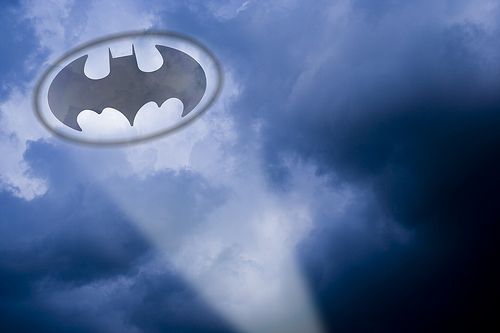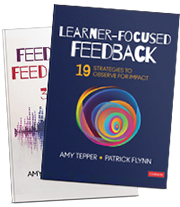*Original post appeared in Corwin Connect – February 17, 2020
How to Ensure Teachers Receive Learner-Focused Feedback
You are amazing, a superhero. Every day you get up to make a difference, and every day you do. In some way, every day, you are a teacher and a learner–maybe a few minutes ago or yesterday, or it will happen after you finish reading. You have made an impact on how someone else thinks or acts, planting seeds that will continue to grow. And someone recently made an impact on you, and you learned something new.
Cultivating a Culture of Learning
In school communities that thrive, where ownership of learning is shifting to students, this idea is nurtured every day. Students learn to teach and support one another, share goals, review each other’s work using criteria, and provide feedback–and teachers learn how to do the same for their peers. Schools realizing this reality are cultivating a culture of learning where
- There is a firmly rooted collective belief that everyone has the ability to learn (Hattie & Zierer, 2018).
- A growth mindset (Dweck, 2006) permeates the school halls and walls.
- Staff and student relationships are based on a collaborative approach to learning.
- Staff’s perception of their current performance and understanding of their impact is accurate (building self- and collective efficacy) – think Hattie’s “Know Thy Impact” (2012)
- Policies and procedures are designed through the lens of supporting systems and structures that ensure learning for all.
But how can schools accomplish this challenging goal? One key driver is through the cultivation of a culture of observation and feedback–one in which all staff have the capacity and willingness, not only to observe student engagement and learning but to be observed themselves, giving and receiving high quality learner-focused feedback that feeds forward or feedback that:
- goes beyond summarizing events to ensuring analysis of effectiveness,
- allows teachers to accurately and clearly see how they are impacting learners,
- leads to improved reflection, instructional practices, and student outcomes,
- going beyond observation for evaluation and utilizing observation for growth.
Observing for Impact
For years, observers stepped into classrooms to identify only what was being taught, and more recently, began to also consider what was being learned. However, real change will not occur until we help teachers identify how choices and actions within their control are creating outcomes. Teachers need to be able to provide and receive support in identifying to what degree students are engaged and learning, and most importantly, why.
But know that your level of success in observing for impact will be directly related to your understanding of how students learn, which will drive how you collect evidence. “Over time students achieve different learning outcomes even in the same classroom and from the same activities…learning does not come directly from classroom activities; learning comes from the way students experience these activities. What matters is what students extract from experiences—the sense they make of them” (Nuthall, 2007).
It is this very idea that should drive all of your evidence collection during a lesson–how students are making sense of the learning experiences. Then, we must identify with teachers how they are impacting those experiences and identify actionable next steps based on this understanding.
Planning for Impact
In Feedback to Feed Forward, we provide 31 strategies in support of teachers, and 10 of those are dedicated to evidence collection during an observation. In our new book, Learner-Focused Feedback, we offer 19 additional strategies for evidence collection because learner-focused feedback about impact does not happen by chance. It is complex work that requires skillbuilding and purposeful practice, along with self and external monitoring of the effectiveness of our evidence collection and analysis. And, as with all good implementation, this begins with planning with steps ranging from broader systemic changes to actions taken in the moments before you begin an observation.
6 Steps for Systems Planning
We have identified 6 steps for your systems planning to ensure you are able to develop a sustainable culture of learning through observation and feedback:
- Define intent and build toward a collective understanding of vision and purpose—improved student learning–through agreements about the values, beliefs, and assumptions that will guide everyone’s practice.
- Assess the readiness to give and receive learner-focused feedback within the school or organization.
- Build the capacity of all to give and receive learner-focused feedback.
- Set up and implement the operational systems for schoolwide focus on impact and learners.
- Design a systematic professional-learning model that is responsive.
- Rinse and repeat.
Teams should build a common vision for all students and a clear understanding of the role of observation and feedback for growth to include:
- Building a shared understanding of expectations for teaching and learning
- Becoming transparent as observers (e.g., actions taken in a classroom)
- Setting protocols and expectations for your classroom visits and use of video
Observation Planning
Perhaps you were thinking of locating your notepad or charging your phone as planning steps. Though important, we ask you to commit to three additional strategies (whether for video or live classrooms) to ensure you become efficient and comprehensive observers of impact. To sharpen your lens, identify look-fors based on:
- expectations outlined in your instructional framework (e.g., unpacking language)
- broad learning goals (e.g. from your portrait of a graduate or standards)
- what you understand about disciplines (e.g. what does it mean to think, speak, read, and write like a scientist?)
These will allow you to maximize core evidence-collection modalities (Figure 1.6).
Just imagine stepping into a room ready to collect evidence based on what you could see, hear, or ask students focused on how the teacher is impacting learners as historians! (Figure 3.8)
Planning is a critical step, but is only part of the equation for observing for impact, as you must also develop the ability to adapt in the moment based on the learning that is occurring–just as teachers must do every day. In Learner-Focused Feedback Chapter 3 is focused solely on planning strategies before an observation and two chapters that offer strategies for adjusting evidence-collection as a lesson unfolds. Download Chapter 3 for free here!
Conclusion

It is in our classrooms where we have the greatest opportunity to form and witness the moments that have a lasting impact on our students. This is the reason why observing these moments must be at the very heart of our daily practice to support teacher effectiveness and to drive a culture of learning. Listening for and viewing teacher-to-student and student-to-student interactions and interacting with learners to accurately determine impact is crucial to building a deeper understanding of how and why learning occurs. This should become the platform for all feedback and next steps.
As a reminder of our constant role as a teacher, a learner, and a superhero, we refer often to a quote from Batman–“it’s not who I am underneath, but what I do that defines me.” As he takes actions to provide hope to Gotham, Commissioner Gordon reminds Batman–“You’re going to make a difference. A lot of times it won’t be huge, it won’t be visible even. But it will matter just the same.” The questions for you as an educator, an instructional leader, a superhero is, how will you help others see their impact?
Let’s stay connected – Sign up for our mailing list
Order our books Feedback to Feed Forward: 31 Strategies to Lead Learning and Learner-Focused Feedback: 19 Strategies to Observe for Impact today!





Leave a Reply